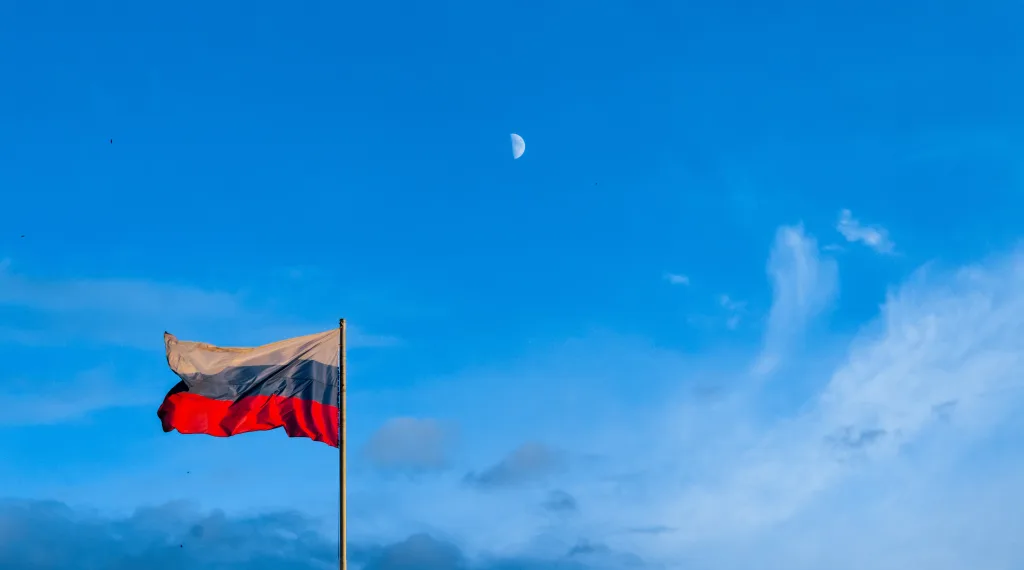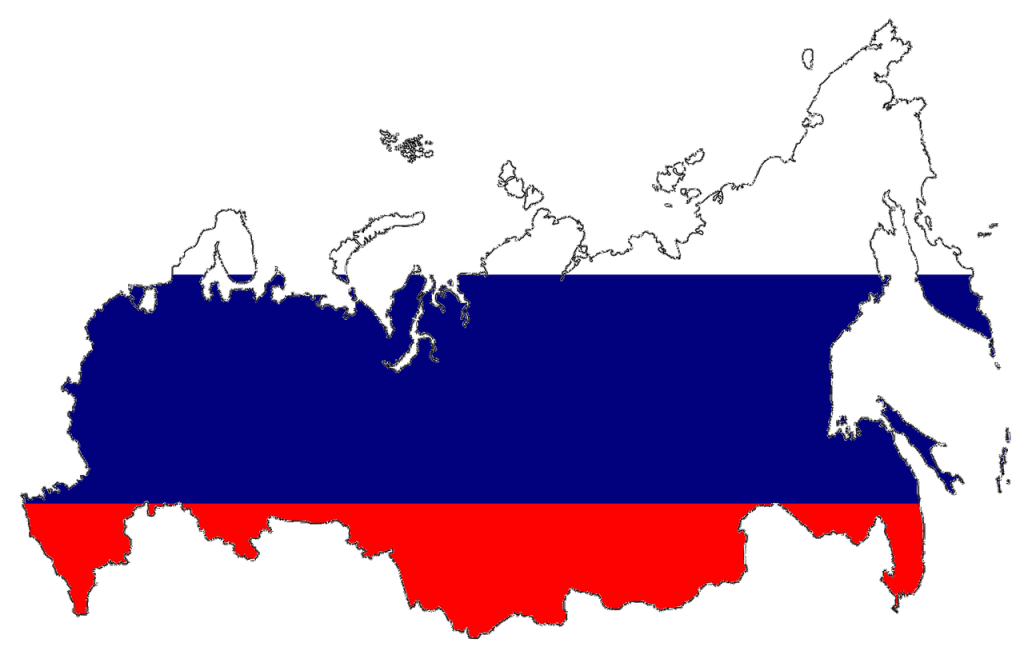Russia, the largest country in the world, is known for its vast territory that spans across two continents. But have you ever wondered why Russia is so big? In this article, we will explore the three main reasons behind Russia’s massive size.
Firstly, let’s consider the geographical aspect. When we look at a typical world map, such as the Mercator projection, Russia appears significantly larger compared to territories closer to the equator. This is due to the distortion caused by the projection, where landmasses near the poles are exaggerated in size. As Russia extends into the northern latitudes, it appears much larger than it actually is. So, in reality, Russia may not be as gigantic as it seems on a map.
Secondly, historical factors played a crucial role in Russia’s expansion. In the 17th century, Russia witnessed significant territorial growth, which culminated in the first Russian colonization of the Pacific. During this time, Russia also engaged in the Russo-Polish War (1654-67), leading to the incorporation of left-bank Ukraine. Moreover, the Russian conquest of Siberia was another pivotal event that contributed to the expansion of the country. The vast and resource-rich Siberian region became part of the Russian Empire, further adding to its size.
Lastly, the lack of interest from other nations in grabbing sub-Arctic territories also helped Russia become so extensive. Due to its harsh climate and limited resources, there was little incentive for other countries to colonize or claim land in northern Russia, Siberia, and the Far East. As a result, Russia was able to expand its borders without much opposition or territorial disputes from neighboring nations.
Another factor to consider is the population density in Russia. While the country’s territory is indeed massive, its population density is relatively low. This is mainly due to the uninhabitable frozen tundra in northern Russia, making it unsuitable for human settlement. When calculating population density, this vast, uninhabited land is still taken into account, which further contributes to the perception of Russia’s size.
Russia’s massive size can be attributed to a combination of geographical, historical, and geopolitical factors. The distortion caused by the Mercator projection makes it appear larger on maps, while historical events such as colonization, wars, and conquests contributed to its territorial growth. Additionally, the lack of interest from other nations in sub-Arctic regions and the uninhabitable nature of northern Russia have further allowed Russia to maintain its extensive landmass. So, next time you look at a map, remember that Russia might not be as enormous as it seems, but it certainly has a rich and complex history that has shaped its impressive size.
How Did The Country Of Russia Get So Big?
Russia’s territorial expansion can be attributed to several key factors. Over the course of its history, Russia went through a series of conquests, colonization efforts, and political maneuvers that contributed to its growth. Here are the main factors that led to Russia becoming such a vast country:
1. Conquest of Siberia: Starting in the 16th century, Russia began its eastward expansion into Siberia. Through military campaigns, exploration, and trade, Russian explorers and Cossack warrior bands gradually conquered vast territories in Siberia, eventually reaching the Pacific Ocean by the 17th century. This expansion was driven by the desire for valuable fur resources, the search for new trade routes, and the goal of securing Russia’s borders against nomadic tribes.
2. Russo-Polish War and the incorporation of left-bank Ukraine: The Russo-Polish War, which lasted from 1654 to 1667, resulted in several territorial gains for Russia. The conflict allowed Russia to incorporate territories in present-day Ukraine, including the left-bank region along the Dnieper River. This expansion gave Russia access to fertile lands, important trade routes, and increased influence in Eastern Europe.
3. Exploration and colonization of the Pacific: In the late 17th century, Russian explorers such as Vitus Bering and Alexei Chirikov embarked on expeditions to the Pacific Ocean. These explorations led to the discovery and subsequent colonization of Alaska and the Aleutian Islands. Russian fur traders and settlers established settlements and trading posts, gradually expanding Russia’s presence across the vast expanse of the Pacific coast.
4. Annexation of Crimea and the Caucasus: In the 18th and 19th centuries, Russia expanded further southwards, annexing territories such as Crimea and parts of the Caucasus region. These conquests were driven by a combination of geopolitical interests, religious factors, and the desire to control strategic trade routes. The annexation of Crimea in 1783 provided Russia with a warm-water port in the Black Sea, enhancing its naval capabilities.
5. Treaty of Nerchinsk and diplomatic efforts: In addition to military conquests, Russia also expanded its territory through diplomatic means. The Treaty of Nerchinsk, signed in 1689 with the Qing Dynasty of China, established the border between Russia and China in the Far East. This agreement secured Russia’s control over the northern territories of Manchuria, further extending its reach into Asia.
6. Political consolidation and centralization: As Russia expanded, it also underwent a process of political consolidation and centralization. The central government exerted control over newly acquired territories, integrating them into the Russian Empire. This consolidation helped maintain stability and facilitate further expansion.
Russia’s territorial expansion was driven by a combination of military conquests, exploration, colonization, diplomatic agreements, and political consolidation. These factors, spanning several centuries, enabled Russia to become the vast country it is today.

Why Is Russia The Biggest?
Russia is the largest country in the world for several reasons:
1. Vast Territory: Russia covers a massive land area of approximately 17.1 million square kilometers, spanning across two continents (Europe and Asia). Its sheer size contributes significantly to its status as the largest country.
2. Geographic Factors: Russia benefits from its geography, as it stretches across the northern part of the Eurasian landmass. The country extends from the Baltic Sea in the west to the Pacific Ocean in the east. It also includes various geographic features such as vast plains, mountain ranges (e.g., the Ural Mountains), and extensive coastlines (e.g., the Arctic and Pacific Oceans). All these factors contribute to the overall size of the country.
3. Historical Expansion: Throughout history, Russia has undergone significant territorial expansion. The Russian Empire, which preceded the modern Russian Federation, expanded its territories through conquest, colonization, and annexation. This expansion, coupled with the lack of significant territorial disputes or losses over time, has allowed Russia to maintain its large size.
Russia’s status as the largest country is primarily due to its vast territory, favorable geographic factors, and historical expansion.
Why Is Russia Big But Small Population?
Russia is known for its vast land area, making it the largest country in the world. However, when compared to its size, Russia has a relatively small population. There are several reasons for this phenomenon:
1. Geographical Extent: Russia spans across two continents, Europe and Asia, and covers a vast area of over 17 million square kilometers. This expansive size means that the population is spread out over a large landmass, resulting in lower population density.
2. Harsh Climate: A significant portion of Russia’s land is located in the northern regions, where the climate is extremely cold and inhospitable. The frozen tundra and Arctic conditions make it challenging for people to settle and sustain life. As a result, these areas remain largely uninhabited.
3. Distribution of Resources: Russia’s population is concentrated in the western part of the country, closer to Europe. This region has historically been more developed and offers better access to resources, infrastructure, and economic opportunities. In contrast, the eastern and northern regions have fewer resources and are less developed, leading to lower population densities in these areas.
4. Historical Factors: Russia has experienced various historical events that have influenced its population size. Wars, famines, and political changes have caused significant population fluctuations throughout its history. Additionally, government policies, such as forced migrations and internal displacements, have also contributed to population distribution patterns.
5. Demographic Trends: Like many developed countries, Russia has been experiencing a declining birth rate and an aging population. This demographic trend has resulted in a slower population growth rate and has contributed to the overall smaller population size.
Russia’s extensive land area, harsh climate, uneven distribution of resources, historical factors, and demographic trends all contribute to its relatively small population when compared to its size.
Why Is Russia So Big On The Map?
Russia appears to be exceptionally large on the map due to the distortion caused by the Mercator projection. The Mercator projection is a cylindrical map projection that was developed in the 16th century by Gerardus Mercator. It became widely used for navigation purposes because it preserved angles and directions, making it useful for sailors.
However, the Mercator projection distorts the size of landmasses as they get farther away from the equator. As a result, landmasses closer to the poles, such as Russia, appear significantly larger on the map than they actually are in reality.
The reason for this distortion is that the Mercator projection stretches the areas near the poles to fit the rectangular shape of the map. This stretching leads to an exaggeration of the size of landmasses in high latitudes.
Russia, being the largest country in the world by land area, stretches across both Europe and Asia. However, when represented on the Mercator projection, its size is greatly exaggerated, making it appear even larger than it actually is.
To provide a more accurate representation of the true sizes of countries and landmasses, alternative map projections, such as the Robinson projection or the Winkel tripel projection, are commonly used. These projections aim to minimize the distortion of landmasses and provide a more realistic portrayal of their sizes and shapes.
Russia appears disproportionately large on the map due to the distortion caused by the Mercator projection, which exaggerates the sizes of landmasses at higher latitudes.

Conclusion
There are several key factors that contribute to the perception of Russia being a vast and expansive country. Firstly, the Mercator projection, commonly used on geographical maps, distorts the size of landmasses as they near the poles. This results in Russia appearing much larger than it actually is in comparison to territories closer to the equator. This distortion creates the impression of Russia being an enormous country, when in reality its land area is not significantly larger than other countries like Canada or China.
Secondly, Russia’s expansion in the 17th century played a significant role in its current size. During this time period, Russia experienced a series of conquests and colonization efforts, including the incorporation of left-bank Ukraine, the Russo-Polish War, and the conquest of Siberia. These territorial gains added substantial landmass to the Russian Empire, further contributing to its perceived size.
Lastly, the harsh and inhospitable climate of northern Russia, including the frozen tundra, has resulted in low population density in these regions. While this land is not inhabited, it is still factored into the total land area when calculating population density. This, in turn, contributes to the perception of Russia’s vastness, as the population is spread out over a large area, making the country appear even larger.
It is important to note that despite the perception of Russia’s size, it is the largest country by land area, covering more than one-eighth of the Earth’s inhabited landmass. However, it is essential to consider the aforementioned factors that contribute to this perception and understand that Russia’s true size is not as overwhelmingly enormous as it may seem.
